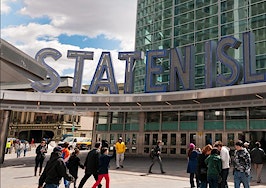- Class A landlords in Downtown granted concessions at values of $102 per square foot in 2015.
- Midtown concessions grew by 0.4 percent and reached record values of $138.50 per square foot.
- According to the SERI report, these compromises are a response to the growing supply of space and lack of upward price movement.
- Leasing activity Downtown dropped from 4.5 million square feet in 2014 to 2.4 million square feet in 2015.
Is the Manhattan commercial market beginning to favor its tenants? The 2016 Savills Studley Effective Rent Index (SERI) report reveals a growth in concession packages, or perks offered by landlords, specifically in Midtown and Downtown Manhattan, where rental rates are relatively flat.
“We are witnessing the early and tentative stages of transition from a landlord’s market to a tenant’s market, particularly in Midtown,” director of U.S. Analytics at Savills Studley Keith DeCoster said. “Rents are always sticky, and what is true of one building doesn’t necessarily hold true for the next one. But with little indication that demand is going to intensify in the short-term and availability rising, conditions are likely to tilt a bit more in tenants’ favor in the coming quarters.”
With softening demand in the historically hot submarkets, class A landlords in Downtown granted concessions at values of $102 per square foot in 2015. In 2011, concessions were valued at $104 per square foot in the same neighborhood.
Midtown concessions grew by 0.4 percent and reached record values of $138.50 per square foot. Improvement allowances in Midtown averaged at $70 per square foot, with free rent periods of around 10 months.

According to the SERI report, these compromises are a response to the growing supply of space and lack of upward price movement. The total rent, including net rent, operating expenses, real estate taxes and electricity, grew just 1.7 percent to $52.97 per square foot Downtown and 0.5 percent to $84.34 per square foot in Midtown.
[Tweet “this is a response to growing supply of space and lack of upward price movement”]
Increasing supply giving tenants the upper hand?
While Downtown total rents are at their weakest point since 2011, tenant effective rents — or an estimate of the actual cost of occupancy for the tenant based on total rent minus amortized lease concessions — is expected to increase this year. Much of the class A space Downtown, including the upper floors of the World Trade Center, is $50 per square foot and up.
However, leasing activity Downtown dropped from 4.5 million square feet in 2014 to 2.4 million square feet in 2015.
The cost of occupancy for tenants rose 3.1 percent to $38.89 per square foot Downtown but remained 23.1 percent below the 2007 peak of $50.58. Landlord effective rent — the estimated rent received from a tenant minus related expenses — grew just 1.4 percent to $14.81, which is 49.3 percent below 2007 levels when it peaked at $29.20.
In Midtown, tenant effective rent was $65.23 per square foot — just 0.6 percent higher than 2014 — while landlord effective rent dropped 1.8 percent to reach $31.12.
Despite the attention Hudson Yards in the Far West Side has been receiving, class A leasing activity totaled 10.3 million square feet, a drop from 12.6 million square feet in 2014. A massive 25 million square feet of Class A space was available at the end of 2015, with 18 million square feet in Midtown alone, the study notes.
“Class A available space in Midtown increased by more than 1 million square feet year-on-year and is expected to increase over the course of 2016 with even sharper growth in 2017 and 2018,” said Steve Coutts, senior vice president of National Research Services at Savills Studley.



